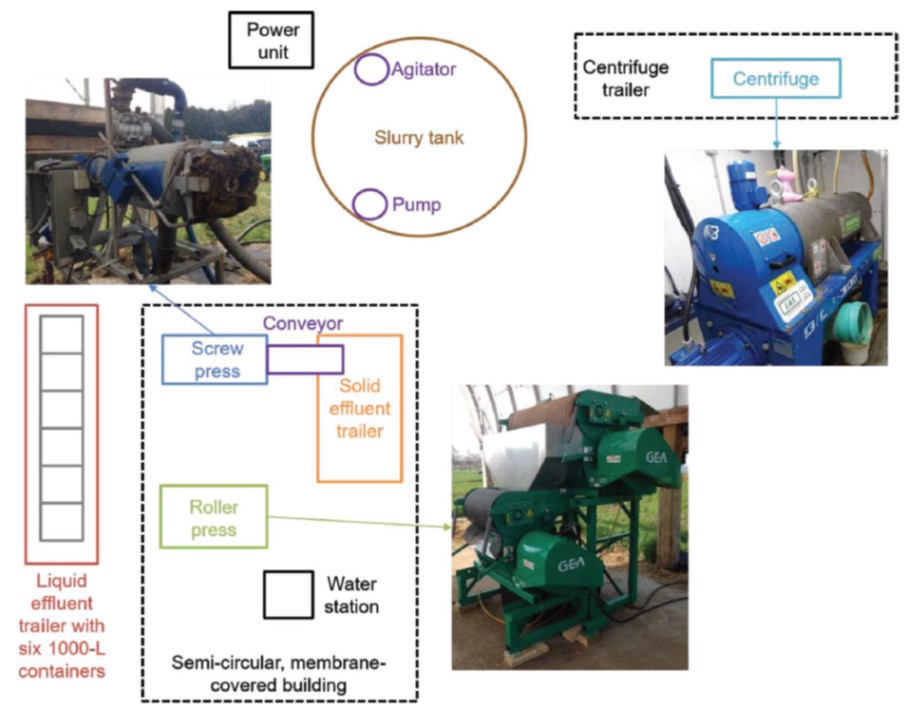Articles scientifiques

- Date de publication : 2018-12-20
Référence
Fournel, S., Godbout, S., Ruel, P., Fortin, A., Généreux, M., Côté, C., Landry, C., & Pellerin, D. (2019). Production of recycled manure solids for use as bedding on Canadian dairy farms: I. Solid-liquid separation. Journal of Dairy Science 102(2):1832-1846.
Documents
Information Complémentaire
https://www.sciencedirect.com/science/article/pii/S0022030218310944
Mot(s) Clé(s)
Lait Fumier
Résumé
Canadian dairy producers have an increasing interest in recycled manure solids (RMS) as bedding material because of reduced availability of traditional bedding resources. Information regarding methods to obtain RMS and composition of RMS is very limited. Hence, a 2-part investigation was developed to compare the performances of 3 mechanical solid-liquid manure separators (part I) and 4 composting methods (part II; companion paper in this issue) for the production of high quality RMS. In this first study, a roller press, a screw press, and a decanter centrifuge were tested for the separation of slurry manure from a commercial dairy farm. During the experiment, the quantity of slurry manure processed and the volume and mass of the liquid and solid fractions were measured. The energy consumption of each separator was recorded, and samples of the slurry, liquid, and solid effluents were collected for analysis. The type of separator did not significantly influence the chemical and bacteriological composition of RMS produced. The choice of a separator for Canadian dairy producers should thus be based on the equipment cost and its capacity, targeted solids dry matter (DM) content and structure, and fertilizing quality of the separated liquid. The decanter centrifuge produced the solid phase with the highest DM and best separation efficiencies for DM, N, and P. However, its low production capacity (1.5 m3/h vs. 9.1–20.3 m3/h) combined with its high acquisition cost (Can$145,000 vs. Can$75,000) and energy consumption (4.99 kWh/m3 vs. 0.10–0.35 kWh/m3) reduce its technical and profitability values. Besides, the centrifuge produced fine structured RMS and a low-quality liquid fraction, not suitable as dairy cow bedding and fertilizer, respectively. Both presses reached acceptable production capacity at a minimal operation cost. However, the poor performance in terms of DM (25%) of the model of screw press used in this study produced RMS unsuitable for immediate use without further processing. The model of roller press used in this study had the advantages of almost reaching the recommended DM content in RMS (>34%), being flexible in terms of inputs, and producing fluffy RMS. Nevertheless, its compression process seemed to allow greater passage of solids into the liquid fraction compared with the screw press. Part II of this work explores different composting methods to reduce the health risks associated with screw-pressed RMS before their use as bedding.


